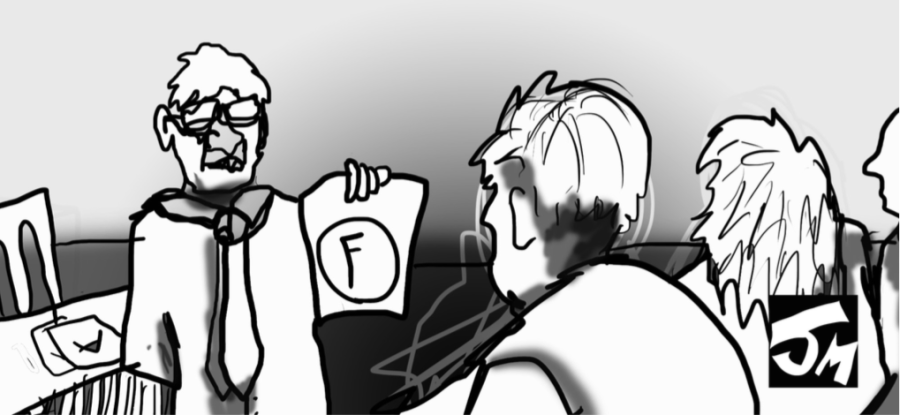Take out your computers and submit your thesis to Schoology,” were the instructions we received soon after walking through the door of American Literature one morning. We obliged, and after a few minutes, the teacher started reading out responses, pointing out the good elements of each example. I saw my thesis pop up on the projector, and I felt a sudden rush of pride that my writing had been chosen. Finally!
That is, until I realized that my thesis statement was not picked for its quality. Mine was the example of what not to do.
Showing student examples to a class is a fairly common practice, especially in courses like English and Social Studies, where the majority of the ideas and discussion topics are generated by the students, not the teacher. It can definitely be beneficial for students to see samples of pieces that have a particular format, such as a thesis statement. Showing ‘good examples’ is a useful way for teachers to demonstrate their expectations for a given assignment while also congratulating a student’s effort and skill. It provides other students in the class with a chance to make sure that they are on the right track, and then ask for more guidance if necessary.
However, singling out a particular student’s writing as a “bad example” is detrimental on many levels. Not only can it be confusing to remember which example to replicate and which one to avoid at all costs, presenting poor examples is not helpful to begin with. If a student’s work has an obvious mistake, such as the use of slang in the thesis of an academic paper, then highlighting that particular point is unnecessary. It does not warrant the use of an example because the majority of the class would already know not to make the error.
Furthermore, using “bad” examples can also drive a wedge between the teacher and the student whose work is being criticized. At best, using a student’s writing as the bad example will be an unpleasant surprise; at worst, it is a form of public humiliation. This can create an atmosphere of distrust in a classroom, making students more hesitant to ask for help out of fear that they will be judged.
On the other end of the spectrum, if there is only a slight difference between the “good” and “bad” examples, such as the use of a particular phrase, it would be more beneficial to just highlight the important aspect of the “good” example to make sure that students remember it.
To be fair, my English teacher’s critiques were valid. The thesis I wrote was not perfect, and I received useful feedback. However, there are better ways to offer writing advice to students than displaying their work to the class as an indication of what not to do.
If a teacher feels that a “bad” example is a necessary part of their lesson, there are still other ways to obtain one. A teacher could make up their own example or use one from a past student. Both options allow for the same level of instruction without the negative side effects.

